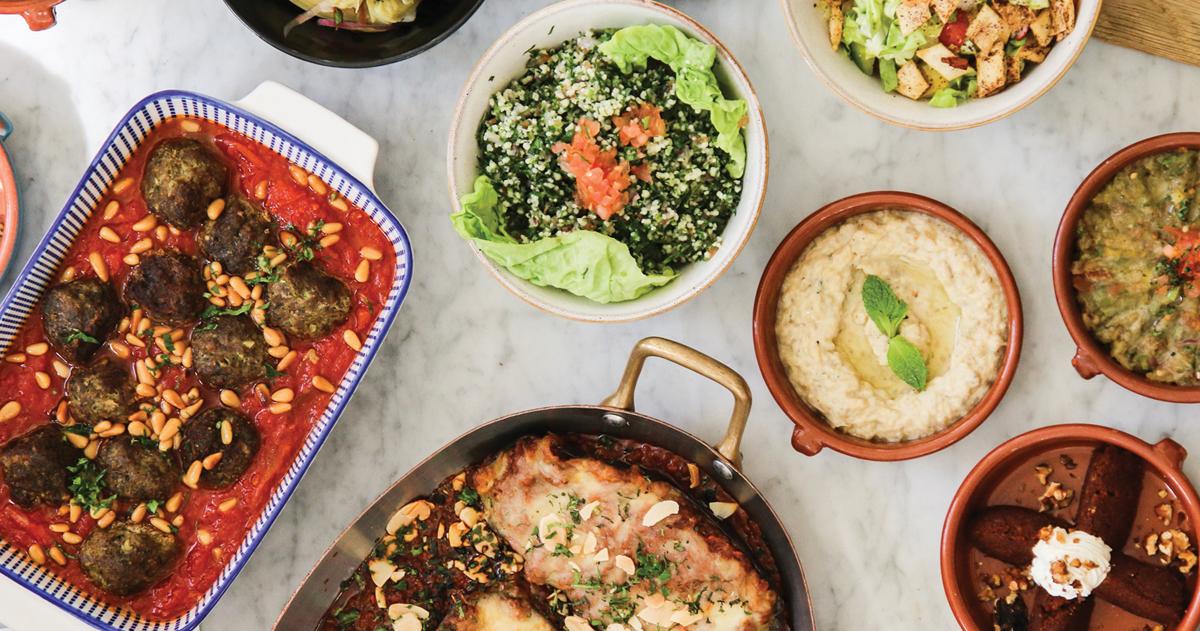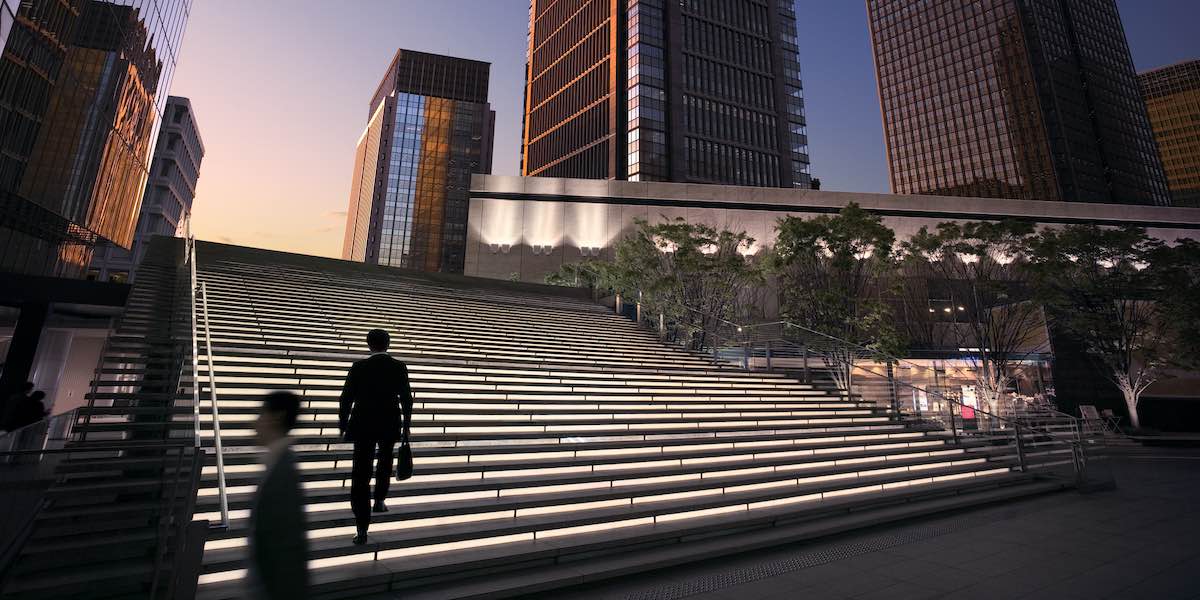Photo: Anchor & Den, Grand Cayman Marriott Beach Resort
Working to dazzle individual and group customers, hotels around the world are serving up innovative food and beverage offerings. Experiential dining, which is being created in many different ways, is clearly the name of the game at several properties.
Some hotels are enhancing both planner and attendee experiences with unconventional styles of food service, while some of those same properties, and others, are bringing celebrity chefs and known restaurants to the table. On the beverage side, some hotels feature venues with unique cocktails and notable atmospheres.
“Every guest wants to do something that they can say was unique, and that made them connect to the city,” says Robert Clarke, director of food and beverage, Hyatt Regency Seattle. “The days of spending three or four days inside of a meeting room are gone.”
His 1,260-room property, which features more than 103,000 square feet of meeting space, is home to a hulking pizza oven that creates an “interactive pizza kitchen experience” for groups. The program teaches customers how to make pizza dough, toss it and spin it in the oven. Participants then make their selections for toppings, personalizing the experience.
“It’s more fun and interactive than you might think because the group members who are making the pizza are focused on their tasks while others [on the sidelines] start asking questions about the dough, the sauce, ingredients, etc.,” Clarke says.
The hotel also regularly partners with local wineries, breweries and distilleries to create unique experiences.
“We usually are able to pull from reserve or small-batch supplies that are selected to pair with each course,” Clarke says. “The winemakers have great personalities and are passionate about their craft and the area, so they have great stories to tell.”
Additionally, the hotel recently created an exclusive private dining space for up to 12 guests in part of its kitchen storage room.
“It’s like a front-of-the-house experience,” Clarke says. “There’s specific lighting and displays from participating local partners that can be seen as we talk through the dinner. There’s a window, so the ambience is there. We’ve only used it three times so far, but it’s been a grand slam for us.”
The Sheraton Oklahoma City Downtown Hotel is making the food and beverage component of meetings more experiential by “finding out what the client would love and seeing how we can deliver that, not just what they need,” says Carrie Parker (MPI Oklahoma Chapter), senior business travel sales manager.
The group that was “most elated” by this approach, she says, needed all of its food to be kosher but was concerned that all it could get was boring chicken meals.
“Several attendees were into Mediterranean, so we really focused on how to deliver hummus and we had a kebob rather than a chicken breast, lots of olives and other Mediterranean tapas,” Parker says. “The dishes were served family style, which lent itself to the experiential feeling.”
The 396-room Oklahoma City hotel—which has 29,837 square feet of meeting space—also is responding to the many “don’ts” it hears from planners, Parker says.
“People are saying, ‘We don’t want a standard salad or a plate of chicken,’” she says. “Instead, we’ll do an appetizer, tapas or another substitution.”
That effort doesn’t take a bigger bite out of a group’s budget than a typical salad does, she notes.
“It can be the same, depending on what the planner chooses, but we try to stay within budget,” Parker says. “That’s not too much of a challenge for us, as long as the planner is willing to do final menus one to three months out so our chef can find what’s abundant and has the best pricing.”
Also for groups, a chef’s table for up to 12 is planned for next year at the New York Marriott Marquis, a behemoth group hotel with 1,966 guest rooms and suites and 124,755 square feet of meeting space—creating an unlikely intimate dining space.
But the hotel’s current chef’s table, which seats up to eight, is unique as it’s used for meeting planner tastings, says Executive Chef Nigel Boschetti.
“Instead of being in an empty banquet room, this makes the tastings very interactive with the chefs who prepared each course,” he says. “By the time a planner leaves, he has interacted with six chefs.”
One of the Big Apple’s biggest meeting hotels, the Marriott Marquis, surprised guests at the NYU International Hospitality Industry Investment Conference in June when lunch was served family style.
Done at the planner’s request, without adding expenses for the hotel or the group, the setup was well-received by the customer and meeting attendees, and Boschetti plans to add this option to the menu of group offerings.
“Guests could pick and choose what they wanted instead of being limited by a plated meal, and they didn’t need to get up and down for a buffet during speeches,” he says.
Meanwhile, Boschetti is looking to make banquets on par with restaurant dining.
“It’s about the presentation on the plates to make the dish more exciting, offering more options and being more creative,” he says.
A chef already making hotel banquets akin to restaurant dining is celebrity chef David Burke, a James Beard Award winner and culinary director of all three restaurants at the Adelphi Hotel, a 32-room property in Saratoga Springs, NY.
“I look at banquet service as if it’s a restaurant,” he says. “The typical hotel mentality is, ‘We cook the food at 8 a.m. and serve it at 8 p.m.’ That’s not what we do.”
Instead, he says, the hotel cooks to order because “people now want to see clever things.”
Known for outlandish creations, Burke added a dry-aging facility to the hotel that was created in accordance with a dry-aging box for which he has a patented design.
“We make our own ham, porchetta and prosciuttos, we dry age our beef and we’re able to hang and dry our own ducks,” he says.
The property also is bringing its food to the masses, and to events, with a food truck.
“We wanted to find different ways to entice customers, and the truck has everything you’d find in a regular restaurant kitchen,” explains Executive Chef Chris Bonnivier. “So the possibilities are endless.”
Having talent with a flair gives the hotel a competitive edge, Bonnivier says.
“The leadership from David, with his wild and crazy mind, sets us apart from others,” he says.
The James New York - Nomad in New York City is standing out by bringing in known restaurants. Most recently, it debuted an outpost of Bourke Street Bakery, a popular Australian bakery, a move that made people “line up around the block” the first day it opened, says Joel Rosen, president, GFI Hospitality, the asset management firm for the 360-room property, which has 5,000 square feet of meeting space.
GFI chose the eatery for its Manhattan property because “you won’t find the style of breads and pastries that they do elsewhere in New York,” Rosen says, adding that the couple behind Bourke Street has devout followers. “They have a special relationship with their customers.”
The property is also home to Scarpetta restaurant, which—coupled with a bar called Seville on the lower level—“has been a magnet for attracting guests. Our model is to create food and beverage experiences in all of our hotels.”
Scarpetta also handles catering for meeting groups, providing another boon for the hotel.
“Meeting planners love it because it is a unique culinary experience that’s very different from traditional catering menus,” Rosen says. “The fact that you can get Scarpetta’s infamous spaghetti tomato and basil, creamy polenta and other choices from Chef Jorge Espinoza speaks to the creativity and variety that is available.”
On the beverage front, the Grand Cayman Marriott Beach Resort features the largest selection of gin in the Cayman Islands, and its bar and restaurant, Anchor & Den, produces its own signature version of the spirit.
The establishment serves 40 gins and recently updated its “gin booklet,” which “tells the story of the restaurant’s passion for gin and illustrates how it develops its gin offerings,” according to Lee Parry, director of food and beverage.
It also recently added “Gin-ius Fridays,” happy hours featuring gin-inspired cocktails and food boards comprised of sausages, various sliders or a mix of Asian foods.
Meanwhile, the Shangri-La at the Fort, Manila, opened The Back Room, a 1920s-themed speakeasy, earlier this year. The venue features 150 gin brands, including 90 that are rare, along with art deco furnishings.
Guests wishing to know more about gin can take a “gin masterclass” at the facility, where other cocktails are served, including a champagne drink where imbibers choose their garnish.
“We bring a flair and storyline to the bar,” says Christopher Hough, executive assistant manager for food and beverage. “This addresses the movement of today’s world, where experience is everything.”







